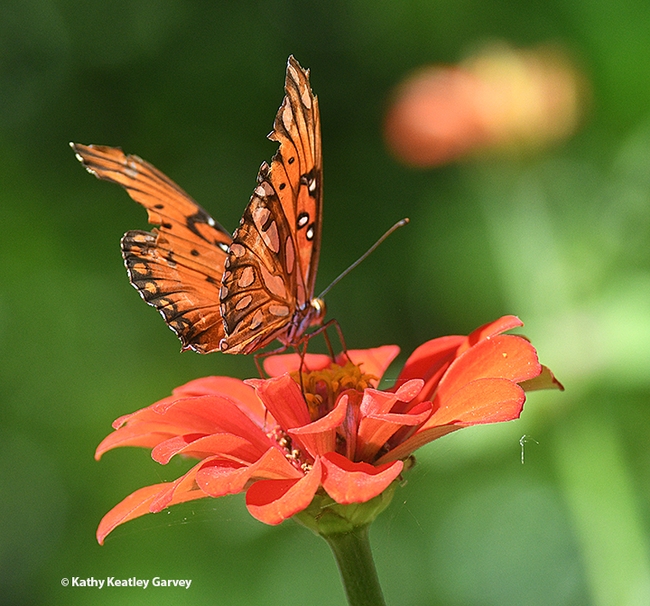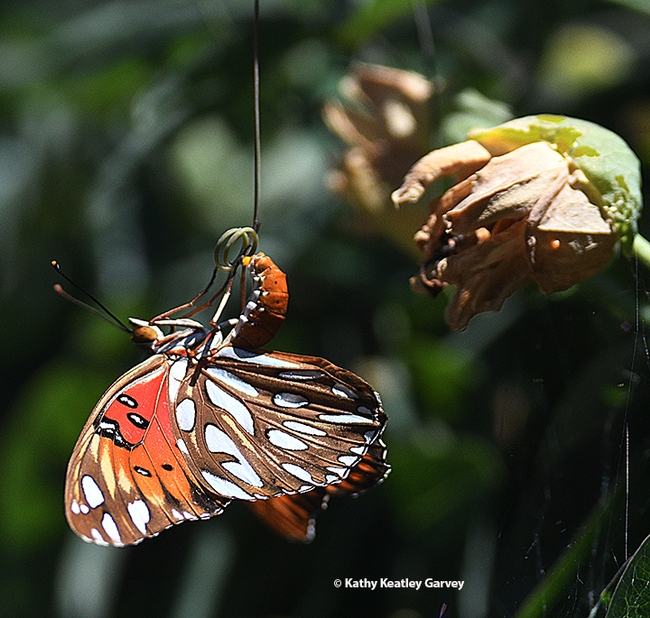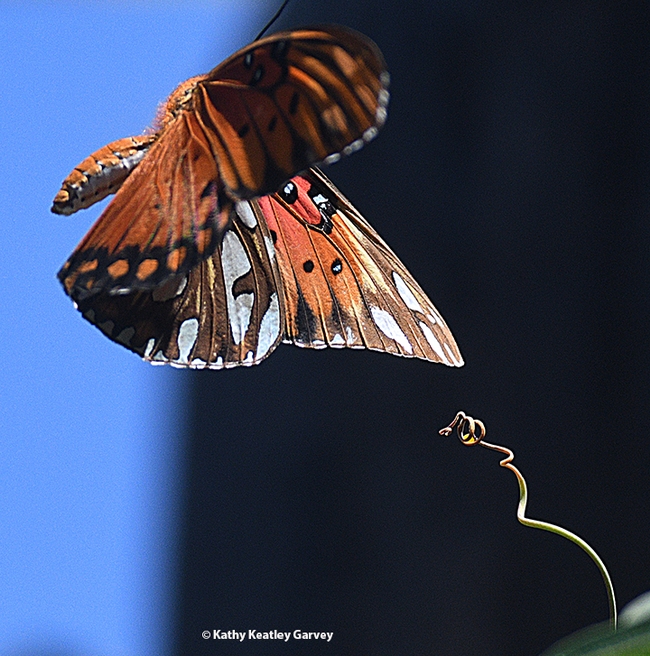In his fascinating book, "Life on a Little-Known Planet: A Biologist's View of Insects and Their World," Connecticut-born biologist/entomologist Howard Ensign Evans (1919-2002) asks "What good is a butterfly?"
"To the farmer, it is an adult cabbage worm or carrot caterpillar, and better off dead. To the entomologist, it is a member of a group of diurnal lepidopterans possessing knobbed antennae, a group containing a few pest species but mainly of interest to hobbyists and dabblers. To the romantic poet, it is a stray piece of some forgotten rainbow, a vagrant wisp of eternity---but there are no longer any romantic poets to speak of. To the man of the world, the pillar of society, a butterfly is simply nothing at all."
Oh, but they bring waves of joy to gardeners. And they are pollinators!
Take the Gulf Fritillaries or passion butterflies (Agraulis vanillae) that breed on our passionflower vine (Passiflora), sip nectar from a zinnia, and flutter around the garden as if they own it. They do. It is their real estate.
Sometimes the Gulf Frits encounter a bird, a praying mantis or a spider, and sometimes they live to bring us another wave of joy. Maybe a ripple, maybe a swell, maybe a surge...but it's a wave of joy.
Thank you, Gulf Frits!
And thank you, Howard Ensign Evans, for describing them as "a stray piece of some forgotten rainbow, a wisp of eternity."
Because they are.
Attached Images:

A tattered Gulf Fritillary sipping nectar from a zinnia in a Vacaville, Calif., garden. (Photo by Kathy Keatley Garvey)

A Gulf Fritillary laying an egg on her host plant, Passiflora. (Photo by Kathy Keatley Garvey)

A Gulf Fritillary showing rejection toward a mate after laying an egg on the tendrils of a passionflower vine. (Photo by Kathy Keatley Garvey)